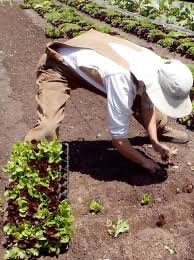 Laura Oliver, of the Jericho Seed Library, gave her third annual TTJ “Starting Seeds with Ease” talk on March 18 at the Jericho Town Library. Twenty-four folks filled the space, getting motivated and informed in the first gardening step for many! Whys Laura talked about the advantages of starting ones own seeds, saying that if you do a good job, your seedlings will be less stressed and healthier; plus, you’ll probably save money. She emphasized not starting them too early. Read the seed packets for when to start particular seeds indoors as well as a lot of other useful information. For plants with particularly long growing seasons such as brussel sprouts, starting them indoors provides a headstart. It also makes sense to start head lettuce indoors, whereas baby lettuce does better with direct planting. She named several other plants that simply do better with direct planting in the garden: peas, beans, corn, root veggies, cilantro, melons and squash. Trays Wind strip trays have become Laura’s number one choice in seed starting. Since they’re made of hard plastic, they’re economical, environmental and long lasting. They’re also less finicky to work with than soil blockers, Laura’s number two choice. Another option is up cycled plastic containers such as yogurt, but they’ll need holes drilled in the bottoms. While peat pots and newspaper crafted containers can work, egg cartons should be avoided, as the seedlings run the risk of becoming root bound. Soil and Prep Laura recommends using Vermont Compost Company’s Fort Vee mix for starting seedlings and Neptune’s Harvest fish emulsion for applying after three weeks. Laura advised placing two seeds per cell, perhaps more if the seeds are old, to ensure germination. Planting depth should be roughly two times the size of the seed. She was emphatic about growing just one plant per cell, and thinning with scissors rather than pulling. Water/heat/light To prevent damping off (a fungus disease seedlings are prone to getting) wait until the top of soil dries out and don’t over water! While heating pads are a great aid to germinating the seeds, Laura recommended not covering them with clear plastic domes. Remove seedlings from the heat and place under lights as soon as possible after the seeds germinate. Six inches is ideal from light source to seedlings. Starting with 18 hours of light per day at first, working ultimately toward 16 hours. Hardening off A necessary step before plants are transplanted to the garden, hardening off prepares seedlings for their placement in the garden. Place trays/pots outdoors, sheltered from wind and sun; the latter should be partial or filtered. You can start with six hours per day and work up to more, bringing them in at night unless it’s very warm. Once it’s consistently over 50 degrees at night, plants are safe to plant outdoors (they can also be covered for protection). Transplanting Make sure seedlings are well watered! If they’re root bound, you should carefully untangle them and spread roots in different directions. Applying fish emulsion when transplanting will give them a nice boost of nutrition. Soil testing Laura highly recommended this and...now is the time! https://www.uvm.edu/sites/default/files/Department-of-Plant-and-Soil-Science/AGTesting/Garden_hort_questionnaire.pdf More information Check out Laura’s two previous Seed Starting presentations, reported on this blog in both March 2022 and 2023...good luck!! Laura reporting:
Folks from Jericho and Underhill came together yesterday for a first meeting of the joint Jericho and Underhill Food Hub. A baker’s dozen from the sister towns discussed combining forces to amplify efforts toward more local food production and access to local food. While there was talk of what the future may hold, i.e. commercial kitchens, farm to school programs, local food celebrations, etc., some activities are happening already and can be supported and enhanced by this group and town residents. For example, a communal potato patch is being planned on one of two possible sites in Underhill. There was talk around having open planting and picking days for families to both educate and feed more people. A community dinner takes place during winter months at Underhill’s town hall following the Stone Soup concept. For summer months, a community bake is in the planning stage in Jericho, modeled after an existing event in Johnson. Ongoing in Jericho, there is the kid’s garden contest, extra row harvests as well as the community edible landscape. March kicks off the garden education series at the Jericho Town Library with “Seed Starting with Ease” led by Laura Oliver. The conversation included bringing back some school gardens that have gone by the wayside, supporting more farmers and local produce at the farmer’s markets, and helping create additional farm stands and farm stores, such as the one planned at Chamberlin’s Farm in Underhill. The next meeting of this incipient group will happen on March 20. We’ll cover vision and organization of the group, as well as establishing groups to tackle various projects ; hope you can spread the word and join us! Dave reporting:
As we approach the 2024 Town Meeting Day, the Jericho Food Hub Task Force (JFHTF) wrapped up its first year by bringing together towns folks and Jericho/Underhill farmers to gather and share information. In cooperation with the Underhill Local Agriculture and Local Foods Initiative, JFHTF invited local farmers to attend the January 20 meeting to discuss local food issues and how best to cooperate and build our local food hub. Representatives from The Farm Upstream, Chamberlin's Farm, Settlement Farm, Jericho Settlers Farm, Keszey Farm, Ash Grove Farm, and Birchhill Sugar Works attended the meeting as well as residents from both towns. The conversation largely focused on how to make local foods more available. Areas of discussion included: how to encourage people to purchase local foods, how to educate people on the benefits of preparing and eating local foods, and how to assist in the affordability of local foods while supporting farmers in making a viable living. From the conversation these thoughts and future objectives were shared: • A farm to school program was discussed and the need for a coordinator to make it work. • Creating a food home delivery program, and/or incorporating local foods in existing food delivery systems. • Connecting with UVM’s Extension Service food and nutrition program • Working with and strengthening supports farmers already have. • Listing local farms and resources online to help consumers make connections. • Taking advantage of the Farm to Plate on-line map of farms. • Helping farms with grant writing to better utilize funding resources. • Better marketing of existing farm stands. • Hosting a summer food celebration (at farmer's market) to highlight local farms. • Sponsoring social events to bring farmers and town residents together for community building. • Supporting Chamberlain's Farm’s effort to create a farm store. (Other farmers mentioned developing on-farm stores and thought that a food hub would help them as well) Next Steps: There was consensus around the importance of community building, celebrating local food and food education, ie, the importance of access to fresh local food and food preparation. In addition to ongoing education and promotion of our local farms, these are all things that could be objectives of the Underhill and Jericho committees in 2024. Specific projects could include supporting Chamberlin’s farm store and other local farm stores, organizing a community dinner and promoting a community supported planting project. Want to get involved? If you would like to get involved with the Jericho/Underhill Food Hub project, please contact us by emailing: TTJericho.vt@gmail.com. Our next committee meeting will be February 28th at 7pm on a zoom call. The next farmer’s meeting will be in April, at a date and time to be determined Dave here, Since the town vote in March 2023, The Jericho Food Hub Task Force has been working to identify the best ways to insure that the task force mission has been achieved. As we head into 2024, we want to illustrate that a Food Hub concept is something that can benefit the Jericho citizens and local farmers. Since Jericho and Underhill are often partners in providing services, the task force has invited a team from Underhill to join in this mission. We hope that by broadening the scope that we can better serve both communities and offer more options to its respective citizens. Some of the highlights from this year include:
On January 20th, 2024, 1-3pm, Jericho and Underhill Farmers will meet to discuss how a Food Hub organization might be able to help them producing and distributing products in Jericho and Underhill. That meeting will be held at the Deborah Rawson Memorial Library. Survey as well: If you are a farmer in Jericho or Underhill, Vermont, we would like to hear from you. Please go to https://forms.gle/YmN6QvNaq9Wp9Jk9A In that survey, you can let us know if you'd like to attend that meeting on January 20th.
 Laura, here: “The real pleasure is not just the delicious food one gets to eat, but the abundance of new relationships that are formed, the growing knowledge of where I live — the people and the geography of where I live,” -Bill McKibben (Addison County Independent, 2007) Our transition town group recently hosted Bill McKibben to talk about his experience eating only local foods from within 100 miles for roughly a year. Though he embarked on this journey nearly two decades ago, it is perhaps even more relevant today. A nice turnout for the meeting with 18 folks joining us online and 25 people in person at the Community Center. This meeting can be watched online, thanks to Angelike Contis and the team at Mt. Mansfield Community TV; use this link: https://archive.org/details/transitiontownjerichomckibben11272023 I’ll include a few tidbits here: At the time of McKibben’s 100-mile experiment, the localvore movement was gaining hold, and CSAs and farmer’s markets were increasing in Vermont and beyond. While the commitment to eating local foods took time and effort, McKibben said it had its rewards, including getting to know more farmers in the Champlain Valley. He said, “we never ran out of interesting things to eat” including fish (from hydroponic systems), root crops, cheese, maple syrup and honey, among other things. As the main cook in his family, McKibben allowed himself the ‘Marco Polo rule’ using salt and spices from afar. He said the hardest part was obtaining grain for bread. Luckily, Ben Gleason of Cornwall, was just bringing back grain growing in Vermont during that time. Gleason was also supplying Otter Creek Beer, adding some libational pleasure to the yearlong experiment. McKibben touched upon alternative energy and climate change in the talk, saying the latter is a growing danger to our food supply. He sees time running short, saying “the most important thing an individual can do is become less an individual; join together with others in movements large enough to make changes...” McKibben shared a question he once asked farmer/politician Dave Zuckerman around how long he thought it would it take for Vermont to become food self-sufficient. Zuckerman responded by saying six months (if we really needed to!) Following the talk, those of us present including one young farmer, seasoned homesteaders, gardeners and activated citizens alike, conversed about the many aspects of trying to localize our food. Going home, I stepped out into the full moon night, dreaming of the possibilities.... Dave here reporting on the October presentation: Reed Sims, from Jericho, a retired soil scientist and member of the Composting Association of Vermont, presented a discussion covering the joy, the science, the soil and garden benefits, and the integration of composting into the family routine. There was hands-on participation, recipe guidelines, and mature compost results to touch and smell. Reed discussed compost's role in preparing gardens for overwintering, and what to do if your compost appears to have failed. Reed was joined by 14 people who all had composting experience, but were ready to learn more. He told us that anything organic in nature can be added to a compost pile. And by maintaining the pile by turning it to ensure there is plenty of oxygen for the microbes will enhance the piles ability for making the usable compost earlier. It is important to have both "greens and browns" in your composting mixture. Greens can be composed of grass clippings, fruit peels, coffee grounds and other nitrogen rich structures, and browns can be straw and hay or other woody or paper materials. Do not add meat products to the pile if you have problems with animals and cannot get the pile temperature hot. News paper is great to add to the compost, shredding it into strips is recommended as the microbes like to adhere to the edges of the paper. breaking the paper down faster. You can compost in the winter months keeping in mind that it will freeze, so leave lots of room for your pile to grow during the colder months. If your compost pile starts to smell. it is an indications that it is getting to anaerobic. So with a little effort turning the compost, air will be re introduced to the composting system and the microbes will be able to do a better job with less smell. Indoor composting can take place with the help of the red wiggler worm and worm composter. The worm composter is a multi-level bin that allows the worms to migrate between the levels consuming your composted waste and leaving behind worm castings and compost suitable for using with your plants. The worms also leave behind a liquid called "Worm Tea" that can be used as fertilizer for your plants. It was great to have Reed with us sharing composting techniques with us. Thank you Reed for pulling this presentation together!
Dave here: As the summer of 2023 winds down, the Kids Garden Contest participants shared the results from their gardens in which they planted, tended and harvested. As with any garden project the kids had varying results, but we saw some great produce come from their gardens. Transition Town Jericho thanks the Town of Jericho Select Board members for sponsoring the Kids Garden Contest again in 2023. This financial gift allowed TTJ to purchase the supplies that were needed for the kids to get their gardens started. The kids answered some survey questions to let us know how it went: List the plants you chose to grow in your garden: -Cucumber tomato pumpkin peppers string beans corn other squash -Yellow scallop summer squash -Cherry tomatoes, beets, radishes, snap peas, and cucumber -Basil, tomatoes, arugula, calendula, onions, beans, sunflowers -carrots, pumpkins, sunflowers, pole beans, oregano, garlic, tomatoes, jalapenos, spinach, boston lettuce, strawberries -Zucchini, potato, basil and string beans Compare the taste of your vegetables with those you would buy at a grocery store -My cucumbers were juicy compared to groceries -The scallop summer squash was so yummy roasted with olive oil, salt and pepper! -The strawberries were sweeter than at a grocery store -The carrots were sweet and delicious! -Basil and arugula where better than the store, we didn't have as much luck with the other plants -Homegrown is always best, but this season brought challenges and we had a very sorry garden this year. -My potatoes were the family favorite at a recent family pot luck dinner! Did you have unexpected visitors to your garden? -I saw worms, ground bugs, flying bugs, underground bugs -Due to the compost, bugs loved the garden. We saw lots of worms and bugs in the soil when we had to dig it up! -Frogs!🐸 -Yes, something ate most of our cucumbers! We saw lots of bugs too. -There weren't too many visitors to the garden other than snails. -Lots of baby bunnies (so cute- but so destructive) -We did see bugs, worms, and grubs, but did not have any problems with our harvest When you plant your garden next year, what things would you change and why would you change them? -We would make the spaces bigger so our squash has more room -We hope to plant a new garden this year and plan to make it bigger. We learned a lot from the process of making this garden and look forward to growing lots of flowers and vegetables! -I would put my tomatoes in a green house so it's hotter -We will cover the plants right away so the animals don’t eat them. We will also label the plants as soon as seeds go in the ground -Different tomato plants and add zinnias -We will rotate our garden beds and move the raised beds away from the chicken run. We had the raised beds fenced off- but our chickens still liked to get involved. -I will plant the potatoes farther apart so they increase in size. Any other comment or story you would like to share with us about your garden experience
-Our experience being first timers was good. We were actually able to grow things -Thank you for the education you provided when dropping off the garden supplies. We learned a lot and had fun even though our garden experience this year didn't turn out as expected. -This was a good starting experience. We learned a lot and are excited to try again next year. Thank you! -Juniper noticed the tomato plants didn't start off. They looked dead but came back to life. Dad didn't think they were going to make it but Juniper believed they would. It took all summer but they came back. -Hoping for a drier and less flooded summer next year! -We THANK YOU for your generosity in gifting us this garden. Laura and Dave reporting:
In early October, Bolton farmer Tucker Andrews and a dozen volunteers with TTJ’s Extra Row program made possible the following winter squash deliveries to local food shelves: 80 - Feeding Chittenden, Burlington 100- Williston Food Shelf 150 - Essex Jct United Church of Christ Heavenly Food Pantry 150 - Jericho-Underhill-Essex Ecumenical food shelf 120 - Janet S Munt Family Room, Burlington 80- Dot's Place, Essex In all, 680 squash at 1,200 lbs. were delivered. Things were a bit different this year. Because of the flooding, Tucker’s output was unusually low and he needed the extra row of squash for his own customers. He generously offered us a field to glean; we got great results and were able to assist many people in filling their food baskets. Was good to know the Extra Row program could provide some insurance for a farmer as well as feed people in need; this was a win-win situation for everyone! Besides us steering members, our volunteers included: Jeff York, Berta Frank, Bob Savaglio, Bill McMains, Amy Ludwin, Steve Ludwin, Sharon Damkot, Valerie Wilkins and Dean Wilkins. Thanks to all! Summer Wrap-Up...Fall is Here!
Laura reporting: Though quiet lately in blogland, there have been plenty of goings on within Transition Town Jericho...read on! Kids Gardening This summer we held our second annual Kids Garden Contest and volunteers led by Dave Clift set up about ten gardens for kids and their families. We’re awaiting survey results on how the growing season went for these kiddos; look for survey results and delightful pictures in an upcoming blog report! Food Hub Task Force This is a town-ordained offshoot of TTJ, and after a first meeting in late spring, we’ve been meeting monthly, talking about all things food/growing/farming related in Jericho. In August, we tabled at a Jericho Farmer’s Market, taking a survey to find out Jericho residents’ thoughts on buying and consuming local food. This survey is ongoing; check out the Food Hub Initiative page on this website to fill one out! Our task force personnel has since evolved from the original group, but continues to attract enthusiastic supporters and organizers. Our first project is underway; getting a community dinner going that will in some form or fashion feature our local farmers and their amazing produce; we’ll keep you posted! Extra Row Now in its third year, this program provides volunteers to help farmers who grow food for donation. In late August, we organized a crew to pick yellow beans at the Barber Farm fields of Charlie Siegchrist. He delivered the six or so bushels to the Vermont Youth Conservation Corps which distributes csa shares to families in need all over Vermont. And early this morning about a dozen folks showed up to glean winter squash at the Bolton fields of Tucker Andrews. The many pounds of squash gathered will be distributed to food pantries in Jericho, Williston, Burlington and Essex. Tree Celebration Edible Landscape’s Ann Gnagey and Tom Baribault are hosting a Tree Celebration at the Jericho Town Library on this last day of September, which includes children’s art and poetry around trees as well as education on how to maintain tree health on our town green and beyond. Watch for an upcoming blog report on this great event! Resiliency Presentations TTJ remains true to its mission of educating our community on issues related to resiliency. Reed Sims will host our *October talk: Composting at Home - the Good, the Bad and the Beautiful. As Reed puts it “This will cover the joy, the science, the soil and garden benefits, and integrating composting into the family routine. There will be hands-on participation, recipe guidelines, and mature compost results to touch and smell. We’ll discuss compost’s role in preparing gardens for overwintering, and what to do if your compost appears to have failed. Bring all of your questions and share lessons learned by experience” *Check out the October Events Calendar for the where and when of TTJ and other community events! 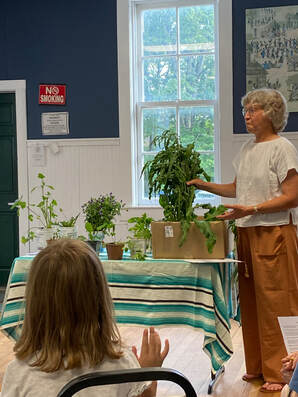 Laura here: On June 26, Chris Sims gave an insightful presentation at the JCC on common weeds that are edible and/or useful as medicines. The crowd of eighteen or so included a handful of children who eagerly took part in the plant ID quiz that kicked off the meeting. Plants were passed around so participants could get a visceral experience of each. Chris remembers as a young girl picking wild blueberries for pancakes and said she’s been hooked ever since! She brought some helpful books including her favorite from the 1980s, Edible Wild Plants of North America, A Field Guide. She started with some common sense precautions such as avoiding roadsides or areas where domestic animals roam and making sure the weeds haven’t been treated with pesticides. Chris focused on ten edibles that “grow and thrive in Jericho’s lawns and gardens”. Here are just a few highlights from her talk: Clover, both white and red are distinguished by triangle patterns (chevrons) on the leaves that actually help guide insects to the flower. The flowers are mildly sweet and the leaves should be eaten in moderation (and cooked) since they contain phytoestrogens. Curly dock, originally from Eurasia, is very prolific in Vermont. The young leaves can be eaten raw or cooked and oxalic acid gives it a lemony flavor. Once the seeds mature in late summer, they can be stripped from the stalk and ground into flour for breads, pancakes, etc. Dandelion: all parts of the familiar ‘lions tooth’ are edible with the flowers being the most nutritious; the pollen is considered a ‘superfood’. Young leaves can be eaten raw or cooked, though get bitter once the flowers buds start to form. Roots harvested in the spring, also before budding, can be roasted, ground and combined with other ingredients for a tasty beveridge. Johnny jump-ups: also known as wild pansies, these pretty purple flowers are edible in small quantities as they contain saponins which are toxic in large quantities. These flowers make a decorative garnish in a salad and are used as dye as well. Lambs quarters: A favorite of Chris’s, she says they’re a great substitute for spinach, especially with the vicissitudes of growing the latter! She said the leaves are best when cooked and brought along a yummy quiche made from lamb’s quarters and eggs for people to sample. When the plant is mature, she said you can collect the seeds to boil them and use in soups or for baking. Pigweed, in the amaranth family is another great substitute for spinach and Chris said the young leaves are tasty fresh, cooked or dried. Plantain as an edible is best when the leaves are young. They can be crushed or chewed to make a poultice for sunburn, skin ailments and insect bites. Purslane, identified by its rubbery thick leaves is highly nutritious and can be added to salads for both its flavor and crunchiness. Wild violet is identified by its heart shaped leaves. Blossoms can be used to make jelly or to beautify a salad. Yellow wood sorrel is a favorite among children as it’s easy and fun to identify. Flowers and leaves are edible in small quantities as the plant is high in oxalic acid. Often used to make a lemony iced tea. |
Archives
March 2024
Click to set custom HTML
|
||||||||||||||
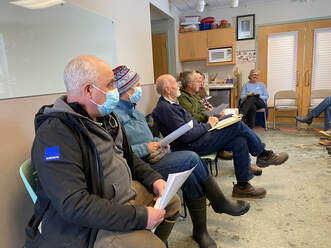
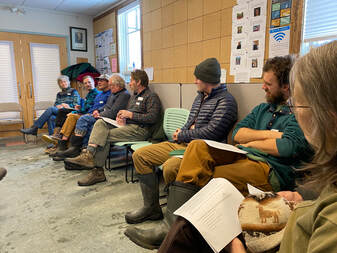
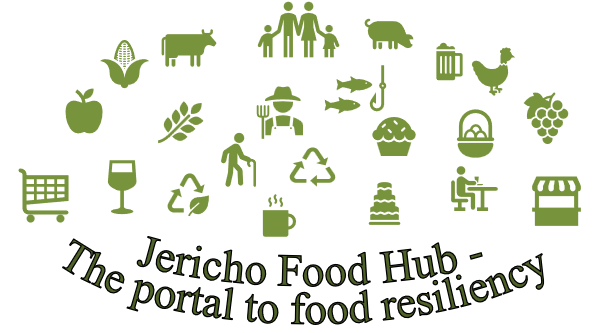
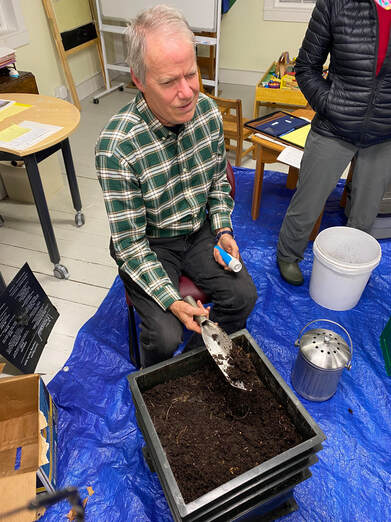
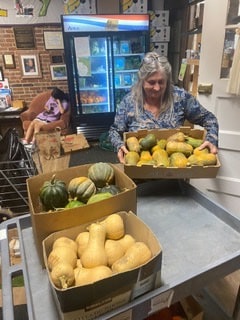
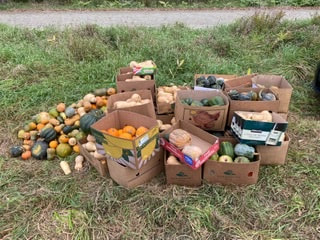
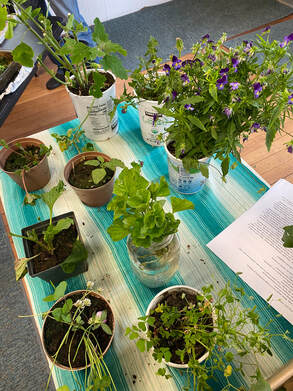
 RSS Feed
RSS Feed
